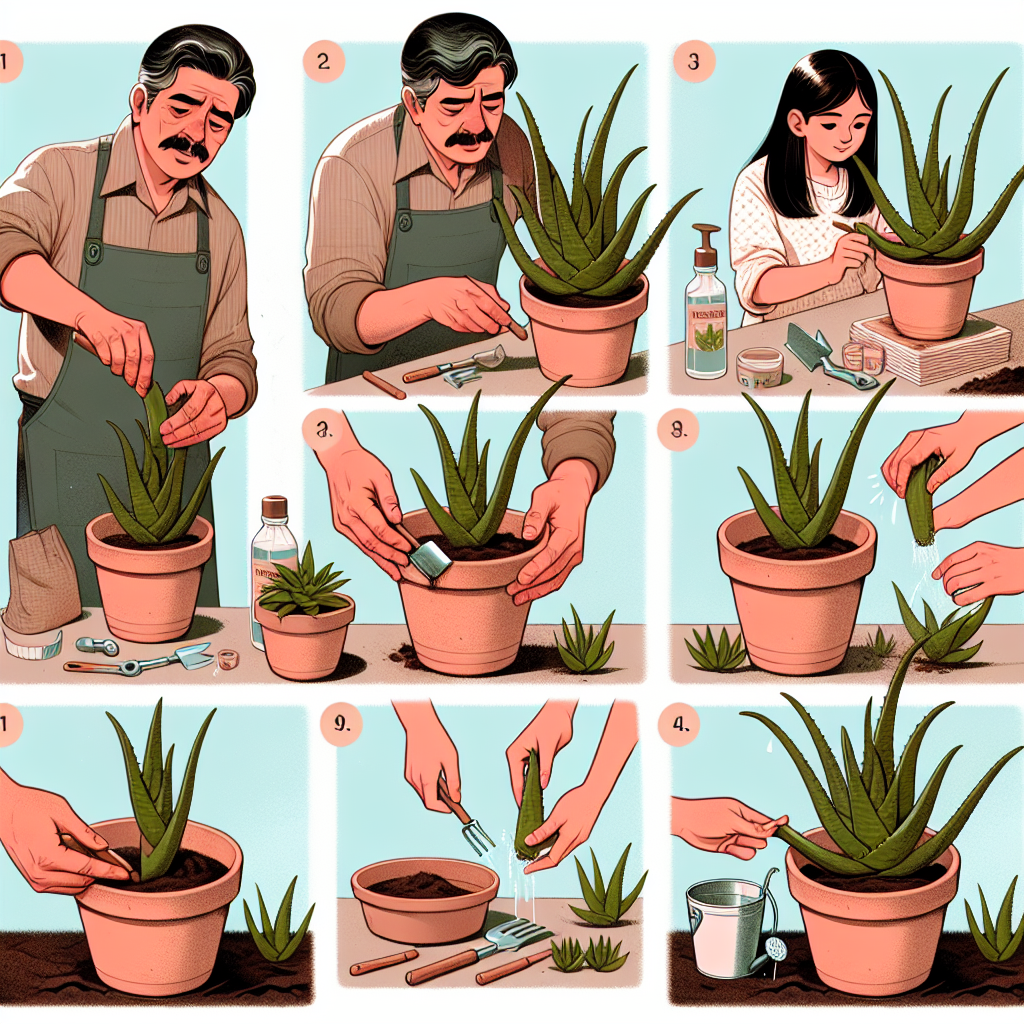
How to plant aloe vera
How to Plant Aloe Vera: A Comprehensive Guide
Aloe vera is more than just a beautiful houseplant; it’s a sustainable and versatile addition to any garden or indoor space. Renowned for its medicinal properties and ease of care, **aloe vera** can thrive in various conditions, making it a favorite among both novice and experienced gardeners. In this guide, we will delve into the process of planting aloe vera, its care, and the benefits that come with it.
Choosing the Right Aloe Vera Variety
Before we delve into the actual planting process, it's essential to choose the right variety of aloe vera. Several species are cultivated, but the most common for home use is the **Aloe barbadensis miller**. This species is known for its thick, succulent leaves, which are rich in beneficial properties.
- Aloe vera: The most popular variety known for its health benefits.
- Aloe aristata: A small variety that is perfect for indoor potting.
- Aloe ferox: Known for its striking tall and spiky leaves.
Essential Supplies for Planting Aloe Vera
To successfully plant **aloe vera**, you will need a few essential supplies:
- Potted aloe vera plant or aloe vera pup (offset)
- Terracotta or plastic pot with drainage holes
- Cactus or succulent potting mix
- Small rocks (optional for drainage)
- Watering can
- Garden spade or trowel
Steps to Plant Aloe Vera
Step 1: Select a Suitable Pot
Choosing the right pot is crucial for healthy plant growth. Make sure to select a pot that has ample drainage holes to prevent waterlogging. **Terracotta pots** are preferable as they allow for breathability.
Step 2: Prepare the Potting Mix
The right potting mix is vital for the successful growth of aloe vera. A **cactus or succulent mix** is ideal, as it drains well and provides the right nutrients. You can also create a custom mix by blending regular potting soil with sand or perlite to enhance drainage.
Step 3: Add Drainage Material
To further aid in drainage, consider adding a layer of small rocks or pebbles at the bottom of the pot. This will help ensure that excess water does not accumulate and cause root rot.
Step 4: Plant the Aloe Vera
Now it’s time for the star of the show! If you are planting a pup:
- Carefully separate the offset from the main plant, ensuring it has roots.
- Make a hole in the center of your prepared potting mix.
- Place the pup in the hole and cover it gently with soil, making sure the roots are firmly tucked in.
If you use a store-bought aloe vera plant:
- Remove it from its packaging without damaging the roots.
- Follow the same procedure as with the pup, placing the plant in the hole and covering the roots with soil.
Step 5: Watering the Newly Planted Aloe Vera
One of the most common mistakes when first learning how to plant aloe vera is overwatering. After planting, wait about a week before giving your aloe vera its first watering. This allows the plant to acclimatize to its new environment without drowning.
When you do water, ensure the soil is thoroughly saturated and allow it to dry out completely before the next watering. Generally, you should water your plant every 2-3 weeks during the growing season (spring and summer) and reduce frequency in fall and winter.
Location and Lighting Conditions
Aloe vera prefers bright, indirect sunlight. If you are planting indoors, placing it near a window where it can get plenty of light is ideal. If the leaves begin to turn brown or yellow, it may be receiving too much direct sunlight. Conversely, pale, stretched leaves could indicate insufficient light.
Caring for Your Aloe Vera Plant
Once your aloe vera plant is established, proper care is essential to ensure it thrives. Here are some tips:
- Fertilization: Aloe vera doesn't require much fertilizer. Use a diluted, balanced fertilizer once or twice a year during the growing season.
- Repotting: Repot your aloe every 2-3 years or once it outgrows its current pot.
- Pest Control: Watch out for pests like mealybugs or aphids. Treat any infestations early with neem oil or insecticidal soap.
Potential Issues with Aloe Vera
Whether you’re a beginner or have some gardening experience, there can still be challenges. Here are a few common issues:
- Root Rot: Often a result of overwatering. Ensure the pot has good drainage and only water when needed.
- Leaf Browning: This indicates excessive sunlight或 underwatering. Adjust the light conditions or watering schedule accordingly.
- Stunted Growth: This can result from insufficient nutrients or cramped space in the pot. Consider repotting or fertilizing.
Benefits of Aloe Vera
Beyond aesthetic appeal, aloe vera offers numerous health benefits, making it a desirable plant to include in your home garden:
- Skin Healing: Aloe vera gel can soothe burns, cuts, and other skin irritations.
- Hydration: Drinking aloe vera juice can promote hydration and digestion.
- Air Purification: Aloe vera can help improve air quality by removing toxins.
Conclusion
Learning how to plant aloe vera is just the beginning. With proper care, your aloe vera plant can thrive and provide multiple health benefits for you and your family. Enjoy the process of nurturing your aloe, whether indoors or out, and relish in the rewards that this remarkable plant offers. Happy planting!
By Guest, Published on September 30th, 2024